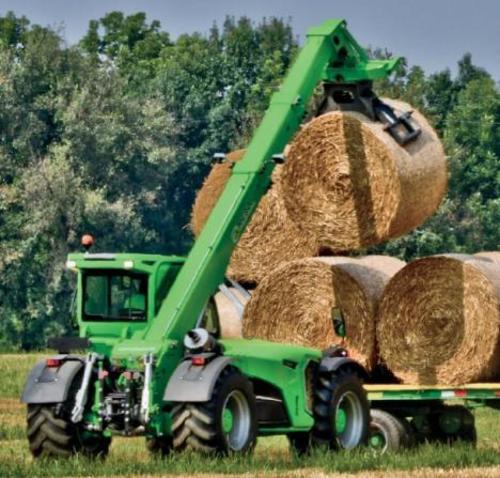Telehandlers, also called telescopic handlers, boom lifts, reach forklifts, or teleporters, are machines that are frequently used in agriculture and civil industry to move loads to places that a conventional forklift can’t access.

Key Benefits of Telehandlers
Telehandlers are basically a hybrid of cranes and forklifts. As such, they can be fitted with other attachments such as winches, muck grabs, or buckets. A telehandler can also have a platform attached so that it functions as a boom lift.
They are very mobile and you can drive them to most locations and sites because of their versatility. They are available in three different steering modes (4-wheel drive, crab steering, and front wheel), and are built to handle rough terrain. That makes them ideal for use onsite at quarries, on agricultural land, or at construction sites.
There are different types of telehandlers, and they all have their own benefits. Rotational telehandlers, for example, can rotate around the chassis and are therefore quite flexible even when stationary.
Though their lifting capacity varies with each machine’s specifications, telehandlers can have the capacity to lift loads of up to 45 tonnes. Ultimately, they are great because they are more portable than cranes. However, their smaller size also means that their lifting capacity decreases as the distance to the centre of the load increases. That is, their capacity decreases as the boom is extended.
To accommodate this, machines can be equipped with front stabilisers to extend their lifting capacity, and many come with computers that alert when the weight limit is close to being reached.
Finally, they can provide you or your company with increased safety. They can be used in place of work site manual lifting, and they make complicated moving work much simpler. For maximum onsite safety, they can only be used by trained and qualified operators, but with the proper preparation of a travel path, they can complete tasks risk-free.
What Is a Telehandler Used For?
Telehandlers are mainly a lift and place tool.
In agriculture, some of the common uses of a telehandler are moving hay and hay bales. On construction sites and manufacturing sites, you’ll often see people using telehandlers to remove heavy loads from trucks, clean up sites, move other materials, and plough dirt or sand.
In Australia, telehandlers are often used in the oil and gas industry, for tunnelling, at airports, in infrastructure, and for mining. They are also often used for container stuffing.
People also commonly make use of telehandlers for cleaning worksites and moving workers, as well as for removing palletised cargo from within a trailer and lifting loads up to rooftops or the upper floors of a building.
What is the Difference Between a Forklift and a Telehandler?
While telehandlers have booms that can be fitted with different attachments such as pallet forks, scoops, hooks, and buckets, forklifts only use forks that transport loads up and down. Telehandlers can also move those loads back and forwards (while their base stays still).
The capabilities of the two machines are also different. Telehandlers have larger wheelbases and bodies, which means they can move more effectively on uneven or slippery surfaces. Forklifts, however, are more cost-effective and appropriate inside a warehouse or factory.
The additional versatility of a telehandler makes it more ideal for the outdoors. Because they can be fitted with different attachments, one machine can perform a variety of tasks and provide an all-in-one solution to many construction and agriculture site situations. Note that the attachments can be utilised with a simple quick hitch design, which means they are both safe and easy to switch out.

